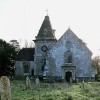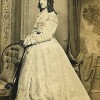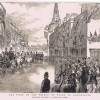Born at Stourpaine into the Dorset rural community in the early part of the 19th century it is unlikely that as he grew up Robert Coward expected a great deal out of life. He was illegitimate, his mother died when he was just 11 years of age, by which time he was probably already labouring on the land and he had little or no formal education.
Robert’s mother, Repentance Coward, herself illegitimate and the daughter of Hannah Coward, was baptised at Holy Trinity church at Stourpaine on the 24th July 1785 and was buried there on the 17th January 1830, when it was recorded that she was 47 years of age. She never married but had two sons; Job, baptised 12th February 1815, he died in infancy and was buried on the 27th May 1817; also Robert, who was baptised on the 16th May 1819.
After his mother’s death in 1830 Robert was probably taken in by another branch of the Coward family living in Stourpaine or by his father and it is likely throughout this period he offered himself for work as an agricultural labourer.
On November 9th 1842 Robert, then 23 years of age, married Ann Allen. She was also from a poor Stourpaine family: the 1851 census has Ann’s parents and three of her siblings listed as paupers’ inmates of the Blandford workhouse.
When pulling together a family history a marriage certificate (after 1837) will often provide the missing links: it will confirm the ages of a couple, who their fathers were and the witness details can reinforce or dismiss ideas you might have about your ancestors’ relationships.
That is the case here. The fact that the couple and all three witnesses signed the marriage certificate with their mark tells us they were illiterate and had not benefited from a formal education. We learn that Robert Coward knew his father was Henry Horlock. One of the witnesses was Charlotte Horlock so it is reasonable to conclude that Robert was on good terms with his father and family. Interestingly, perhaps out of respect for his mother’s memory, he never changed to his father’s name. His great and great great grandfathers were also named Robert.
Children were late coming to this relationship but after five years of marriage in 1847 Robert and Ann had a daughter who they named Rhoda. She was baptised on the 2nd of May in that year. Everything we know about Robert to this point and subsequently learn about his later life leads to the conclusion that he was at heart a decent family man.
Early in 1848 disaster struck this poor family when Robert was caught poaching. We know of nothing to suggest this enterprise was for any purpose other than to put food on the table for his family. He, however, on being apprehended by the keeper would have straight away known he was in serious trouble and likely to be facing six months in jail with hard labour at the very least. Perhaps, it was the thought of being separated from his wife and baby daughter that prompted him to make a fight of it and to try to escape the clutches of the keeper. Failing, he found himself arrested and held in jail until his trial at the Dorchester Assizes on 11th of March 1848. He was charged with poaching and beating a keeper.
Dorchester Crown Court had a long reputation for handing down rough justice. In the 17th century the notorious Judge Jefferies let it be known at the start of the hearings against men involved in the Monmouth Rebellion that he was minded to be lenient: 74 men went to the gallows. Robert would have known about the seven men from Tolpuddle, like him all agricultural labourers, who had been transported to Australia on trumped up charges that they had formed a Trade Union. Later in 1856 Martha Brown was sentenced to death for defending herself against an ogre of a husband. She was publicly hanged in front of a crowd numbering thousands.
Robert would have faced his court appearance with much trepidation and without a doubt he was greatly worried for his wife, who he knew even if he was treated leniently faced a long period of having to provide for herself and their child on her own.
“The sentence of the court upon you is, that you be transported beyond the seas for a term of 7 years.” For Robert this dreadful punishment the worst he may have expected meant that once transported he would never return to England and it was unlikely he would ever see his wife and daughter again. He was just 27 years of age and he must have felt that his life was over. He left London aboard the ‘Adelaide’ on 17th August 1849 arriving in Sydney on Christmas Eve 1849.
It was surprising, but reinforces what we say earlier about his good character, that he secured his Ticket of Leave on 30th December 1849. This was incredibly quick and confirms that he must have been a model prisoner in England while waiting to sail and continued to be so on the voyage and on arrival in Australia. This did not mean he had his freedom but he was probably allowed to work for wages and live virtually free: he would not have been allowed to leave Australia until his sentence had been completed and he would have from time to time to appear before a local Justice. He may have been restricted in other ways such as the area he could work and live in and he may have been subject to a curfew.
He must have been more than a little relieved to have survived the voyage and found that his life was not after all going to be quite as bad as he had every reason to have expected it to be. But imagine his joy on learning that his wife and daughter had secured passage as assisted immigrants. Ann and Rhoda arrived in Australia on the 14th August 1851. They were not long separated their first child born in Australia in 1853 was another daughter Sara Martha.
The government needed colonists to settle in Australia but few went out and the government turned to convicts who had completed their sentences; they were offered the essentials of free land, tools, seed and livestock. These incentives meant that many accepted the offer and became landowners and farmers.
Sentence served, against all the odds family united, Robert and Ann would have seized this opportunity with both hands. They stayed in Australia and produced a further 10 children, five sons and five daughters. When he died Robert Coward’s estate was one thousand six hundred and twenty seven pounds. This couple had managed to turn adversity to opportunity and they both enjoyed a long life. Ann died on the 24th November 1900 aged 78 years and Robert died 22nd January 1905 aged 88 years. They were living and farming in Maitland, NSW where they are buried.
Rhoda thrived and on the 25th January 1868 married William Gulliver a son of Dorset who arrived in Australia around 1849 aged 5 years. Rhoda and William went on to have eleven children and some of their descendants now live in New Zealand.
Footnote: Robert Coward’s mother, Repentance, worked as a button maker. Her mother, Hannah Coward, was the daughter of Robert and Mary Coward and was baptised at Stourpaine 11th of February 1759 and was buried in the parish on 16th of March 1794 – a short life of just 35 years. As far as we can tell Repentance was her only child.
We have found that Robert Coward had been in trouble previously. At the time of the 1841 census he was in jail at Dorchester. There were two other members of the Coward family there as well: William (25) and James (70.)
Footnote (2) It appears that Robert Coward had an older brother, Charles. His mother Repentance Coward had him baptised at Stourpaine on the 24th of February 1811. According to information supplied by Andrew Cooper who is a direct descendant of Charles Coward, it seems both brothers were involved in the 1848 affray.



